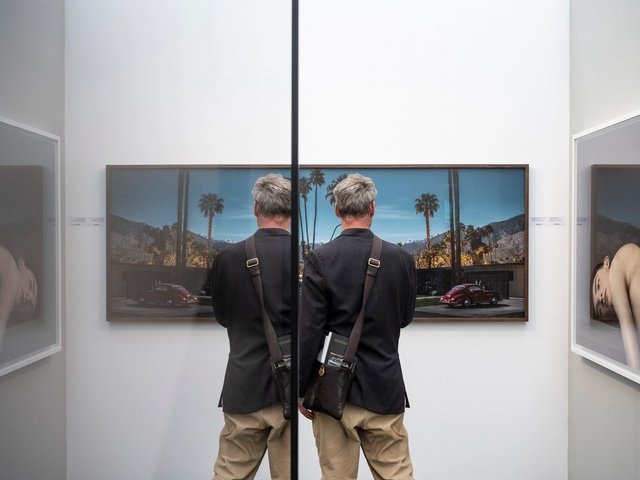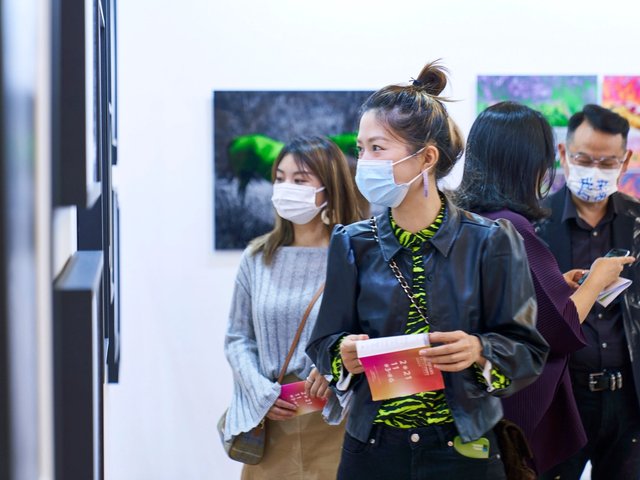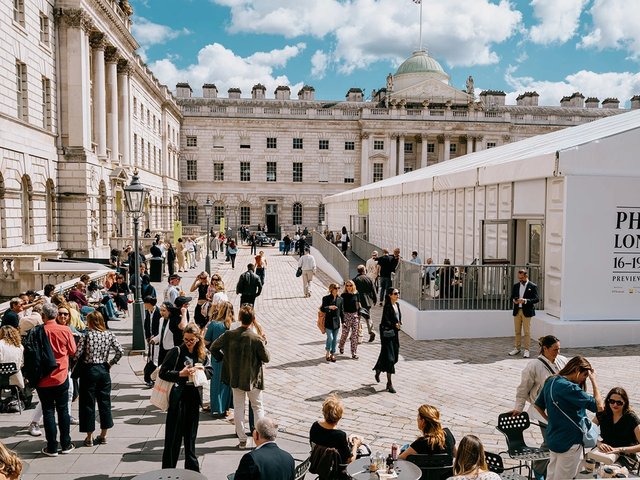Exhibitors at Photo London (until 12 September) are reporting thronging crowds and positive sales as the first physical photography fair to take place since the onset of the pandemic opens to the public in London today.
A celebratory atmosphere filled Somerset House, Photo London’s long-term home, during the preview event, with gallerists already seeing sales and expressing optimism for the tenor of days ahead.
Ensuring this event is a physical reality and not a glorified website has been something of a struggle, the fair’s organisers openly admit. The director Michael Benson, in his introductory remarks, said it had been “the worst of times.”
“To put it mildly, this edition of Photo London has not had it easy,” he said. “The insanity of Brexit was quickly joined by the global pandemic that turned our wounded world upside down.” He described the physical event as an “act of resistance.”
The sixth edition of the fair, which first launched in 2015, comprises 85 exhibitors who have made their way to London from 15 countries worldwide. Their offering is diverse, from the traditional and conservative to the new, emerging and hopeful. Whilst vintage photography remains prominent, not least with the headline inclusion of classic Robert Capa prints from the David Kogan collection, Photo London is also showcasing an array of new works created during lockdown. Such contemporary additions to the canon are available to see in the Discovery section, and in some of the more contemporary galleries, and express themes of containment, isolation and introversion as photographers found ways to express the experience of the pandemic. Are we about to witness an urgent new movement of portraiture—of others and of self—and bodily actionism as a result of Covid-19? This fair suggests so.
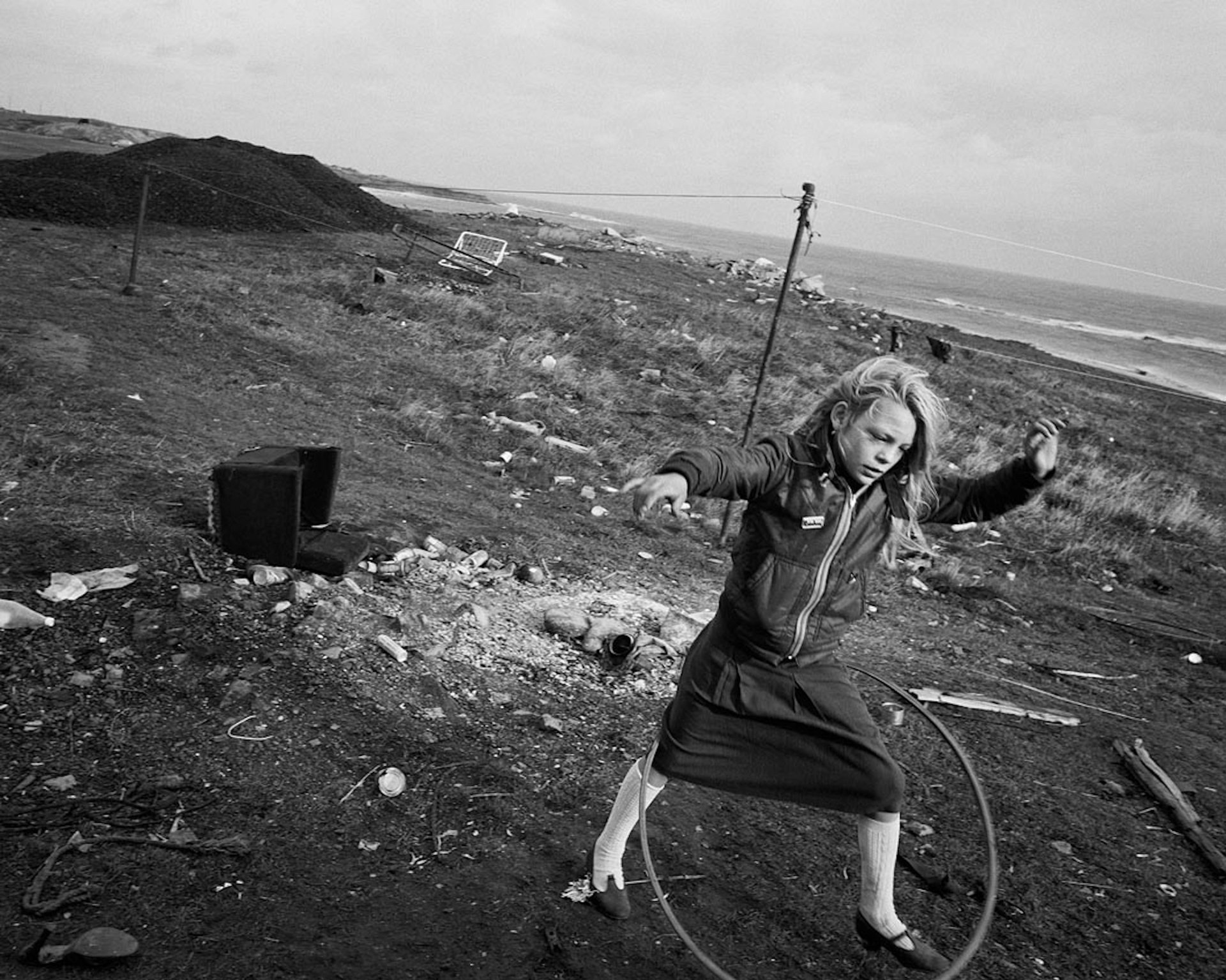
Helen and her hoola-hoop, Seacoal Camp, Lynemouth, Northumberland (1984) by Chris Killip ©Chris Killip, Courtesy Augusta Edwards Fine Art
Magnum Photo Agency’s booth includes Antoine d’Agata’s terrifying thermal image of Parisians during the early days of the Covid-19 pandemic in 2020, for example, whilst London’s Arthill Gallery present a fascinating range of artists, many from Asia, who came to the gallery’s attention through their Emerging Artist Initiative. Yushi Li, a Chinese artist currently studying a PhD at London’s Royal College of Art, stood out for her carefully constructed and pointed self-portraits. Augusta Edwards Fine Art, meanwhile, have on show beautiful original prints by the pioneering British documentarian Chris Killip, who died during lockdown.
But the power of portraiture is perhaps best highlighted by the work of Shirin Neshat, the Master of Photography for Photo London 2021, who called photography “the soul of nations” as she opened her exhibition at Photo London last night. Neshat was born in 1957 in Qazvin, a prosperous, conservative city north west of Tehran, the capital of Iran, and was raised wearing a veil or chador in public. In 1975, at age 18, Neshat was sent to the US to study, eventually graduating as a Master of Fine Arts from Berkeley, San Francisco, in 1983. Her studies in California coincided with the Iranian Cultural Revolution, the takeover of Iran’s government by Ayatollah Khomeini, and Iran’s bloody war with Iraq. Neshat found herself unable to return to the country of her birth, and was incapable of seeing her family again. She had to remake herself as an Iranian-American. Her art since, and the work on show at Photo London, speaks of seeking to resolve in herself this split allegiance between contradictory opposites; Iran and the US, freedom and oppression, hope and longing. She spoke movingly at Photo London of the city being a meeting place for her, as her once long-separated sister and niece were able to fly from Tehran to London to be with her for the exhibition.
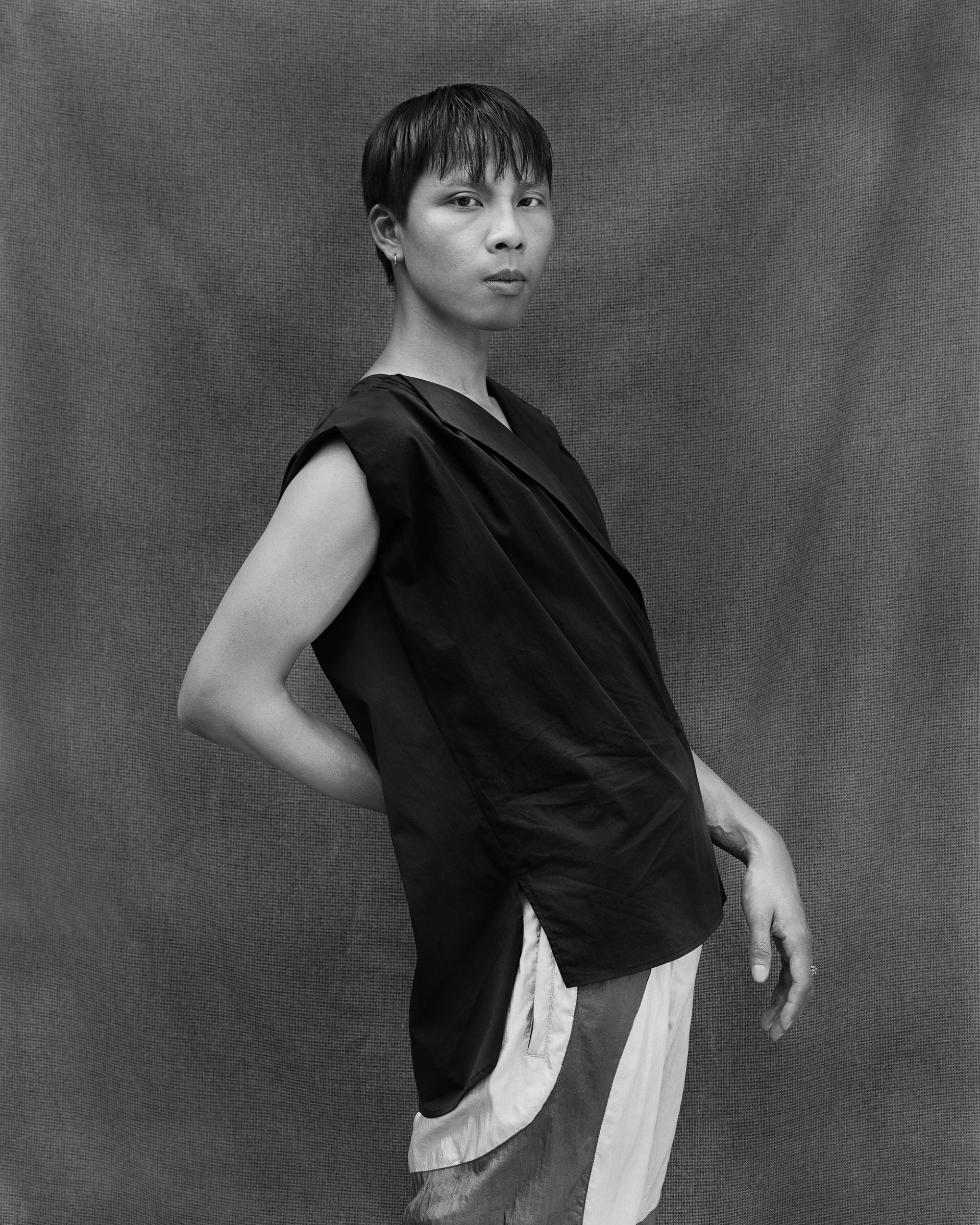
Åsa Johannesson's Looking Out, Looking In (2021) at Peckham 24 © the artist, courtesy Monica Allende and Peckham 24
Photo London has always championed photography that seeks to redefine what the medium is beyond the still image. This year is no exception, with the prominent inclusion of the British photographer Damion Berger’s Black Powder series, to which Grob Gallery is dedicated. Visitors, then, can witness Berger’s unique and very modern interpretation of dark room photography. Berger has spent the last decade attending the world’s most opulent international events, capturing on a vintage camera the resulting fireworks displays—from the London Olympics in 2012 to the inauguration of the Burj Khalifa in Dubai in 2010 to Venice’s Festa del Redentore, or the Feast of the Redeemer, the festival held annually in memory of the plague of 1576, and which fills the sky over the Basilica Santa Maria della Salute.
Yet Berger captures such violent yet celebratory visual events in an utterly original way; by allowing the photograph to form over a period of hours via a series of overlapping long exposures. The results appear like rocket-propelled explosions of light—monumental photographic calligraphy.
Photo London’s fringe remains integral to the overall fair. This year, at Peckham 24, a group exhibition titled Light explores the work of a group of emerging artists from Hong Kong—Caleb Fung, Liao Jiaming, O’Young Moli, Julian, Tang Kwong San, Yuen Nga Chi and Wong Wei-him—who create photography in the midst of the anti-extradition law movement. Kowloon Park, a place secretly known as a cruising spot for gay men, is a recurring motif in the group show, as is the concept of "stereotopia"—the discussion of how marginalised groups can escape from power structures and evade authoritarianism.
Light is curated by the former Sunday Times photo editor Monica Allende, who says the title reflects on the multivalence of light. “As a symbol for reason, enlightenment and knowledge and the capacity of humans to develop on a rational level,” she says.
Allende studied Plato’s allegory of the cave whilst curating the show. “Light allows us to see the shadows on the wall, in this case a gallery,” she says. The exhibition launches today at Peckham’s Seen Fifteen and Safehouse II galleries.
- Photo London is on until 12 September at Somerset House, London



